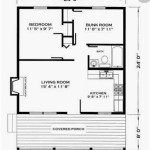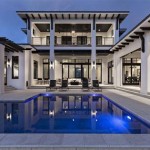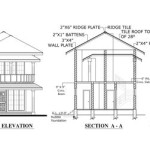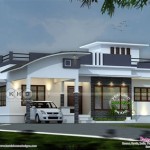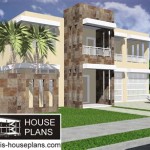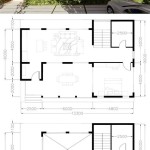Dormer Bungalow Plans Homes: A Comprehensive Guide
Dormer bungalow plans represent a unique architectural blend, combining the accessibility and single-story living of a bungalow with the additional living space provided by dormer windows integrated into the roof. This design is particularly popular for those seeking comfortable, adaptable homes that maximize space utilization on a limited footprint. Understanding the nuances of dormer bungalow design, planning, and construction is crucial for achieving a successful and fulfilling home-building project.
The term "dormer" refers to a window that projects vertically from a sloping roof. In a dormer bungalow, these windows are not merely decorative; they are integral to creating habitable space within the roof structure. This allows for bedrooms, studies, or other living areas to be situated on what would otherwise be a unusable attic space. The design maximizes the potential of the floor plan, offering a practical solution for homeowners who desire more living space without significantly expanding the ground-floor footprint.
Dormer bungalows offer a charming aesthetic appeal, often characterized by their low-pitched roofs, integrated dormer windows, and inviting facades. This style is well-suited to various architectural influences, ranging from traditional to contemporary designs, allowing for customization to match individual preferences and neighborhood aesthetics.
Key Benefits of Choosing a Dormer Bungalow Plan
Opting for a dormer bungalow plan offers several distinct advantages, appealing to a wide range of homeowners and lifestyles. These benefits extend beyond mere aesthetics, encompassing practical, financial, and lifestyle considerations.
Firstly, dormer bungalows efficiently maximize living space. By incorporating dormer windows, the otherwise wasted attic area is transformed into usable square footage. This is especially beneficial for smaller lots where expanding the ground floor area is not feasible or desirable. The additional space can be configured to accommodate bedrooms, bathrooms, a home office, or recreational areas, enhancing the overall functionality of the home.
Secondly, dormer windows improve natural light and ventilation. Attic spaces often suffer from poor lighting and ventilation, making them unsuitable for prolonged use. Dormer windows introduce natural light, creating a brighter and more inviting atmosphere in the upper story. They also allow for improved airflow, contributing to a more comfortable and healthy living environment. Proper ventilation is essential for reducing moisture buildup and preventing issues such as mold growth and structural damage.
Thirdly, dormer bungalows can enhance property value. The additional living space and aesthetic appeal of a well-designed dormer bungalow can significantly increase its market value. This is particularly true in areas where space is at a premium. Potential buyers will often appreciate the versatility and functionality of the design, making it a desirable investment.
Finally, dormer bungalows offer design flexibility. The integration of dormer windows allows for a wide range of architectural styles and internal layouts. Homeowners can customize the size, shape, and placement of the dormers to achieve their desired aesthetic and functionality. This flexibility makes dormer bungalows adaptable to various needs and preferences.
Essential Considerations When Planning a Dormer Bungalow
Planning a dormer bungalow requires careful consideration of several key factors to ensure a successful and aesthetically pleasing outcome. These factors include structural integrity, local building codes, cost implications, and aesthetic considerations.
Structural integrity is paramount. Adding dormer windows to an existing roof or designing them into a new build requires careful evaluation of the roof's structural capacity. A qualified structural engineer should assess the existing framing to determine whether it can support the additional load of the dormers without compromising its stability. If the roof needs reinforcement, this should be factored into the budget and construction plan. Improperly designed or installed dormers can lead to structural problems, including roof sagging, leaks, and potential collapse.
Compliance with local building codes is crucial. Dormer construction is subject to specific regulations regarding size, placement, and materials. It is essential to consult with local building authorities to obtain the necessary permits and ensure that the design complies with all applicable codes. Building codes are in place to ensure the safety and well-being of occupants and to prevent structural failures. Failure to comply with building codes can result in costly fines and delays in the construction process.
Cost considerations must be carefully evaluated. Dormer construction can be a significant investment, and it is essential to develop a realistic budget that takes into account all associated costs, including design fees, materials, labor, and permits. The cost of dormer construction can vary depending on factors such as the size and complexity of the dormers, the materials used, and the contractor's fees. Obtaining multiple quotes from reputable contractors is recommended to ensure competitive pricing and to avoid unexpected cost overruns.
Aesthetic considerations should also be taken into account. The design of the dormer windows should complement the existing architectural style of the bungalow and enhance the overall aesthetic appeal of the property. The size, shape, and placement of the dormers should be carefully considered to create a balanced and harmonious appearance. Working with an architect or experienced designer can help to ensure that the dormer design is both functional and visually appealing. Important aesthetic factors include the roof pitch, the dormer's window style, and the material choices for siding and roofing.
Finally, ensure appropriate insulation is implemented. As part of the roof structure, dormers are susceptible to heat loss in the winter and heat gain in the summer. Proper insulation is crucial for maintaining a comfortable indoor climate and reducing energy costs. Insulation should be installed in the walls, roof, and floor of the dormers to minimize heat transfer. Consider using high-performance insulation materials, such as spray foam or rigid foam, to achieve optimal energy efficiency.
Choosing the Right Dormer Style for Your Bungalow
Different dormer styles offer distinct aesthetic and functional characteristics. Selecting the right style is vital for achieving the desired look and performance for your dormer bungalow.
Gable dormers are one of the most common and readily recognizable styles. They feature a triangular roof (gable) that projects from the main roof. Gable dormers are relatively simple to construct and offer ample headroom and space. They are well-suited to a variety of architectural styles and can be easily adapted to different sizes and shapes. Gable dormers can be either front-facing or side-facing, depending on the desired effect and the orientation of the roof.
Shed dormers feature a single, sloping roof that extends from the main roof. Shed dormers typically provide more headroom and usable space than gable dormers. They are often used to create larger living areas, such as bedrooms or bathrooms. Shed dormers tend to have a more contemporary appearance and can be a good choice for modern bungalow designs. It is imperative to ensure proper water drainage from the shed dormer roof to prevent leaks.
Hip dormers have a roof that slopes on three sides, forming a hip. They offer a more subtle and integrated appearance compared to gable and shed dormers. Hip dormers are often used in traditional architectural styles and can add a touch of elegance and sophistication to a bungalow. They generally provide less headroom than gable or shed dormers, but they can still create usable space for smaller areas, such as closets or reading nooks.
Eyebrow dormers are curved or arched dormers that resemble an eyebrow. They are a more decorative and less common style, often found in historical or period homes. Eyebrow dormers offer limited headroom and space, but they can add a unique and charming aesthetic element to a bungalow. Construction of eyebrow dormers often requires specialized skills and can be more complex and expensive than other dormer styles.
Selecting the appropriate dormer style depends on several factors, including the architectural style of the bungalow, the desired amount of headroom and space, and the budget. Consulting with an architect or experienced designer can help to determine the best dormer style for your specific needs and preferences.
Beyond the specific dormer style, the material choices for the dormer's siding and roofing are also critical to overall appearance and weather resistance. Opting for materials that complement the existing home and offer long-term durability is a smart investment.
Careful consideration of these aspects will ensure a dormer bungalow that is both aesthetically pleasing and functionally efficient, providing comfortable and valuable living space for years to come.

Lansdowne 3 Bedroom Chalet Design Bungalow Floor Plans House

Dormer House Plans For Developer At Mounttemple Creative Design Group Architects

4 Bedroom Dormer Bungalow Plans The Aconbury

Large Dormer Bungalow Designs The Churchfield

Dormer House Energy Efficient Sustainable Ecohouse Developments

220 Best Dormer Bungalow Ideas House Design Exterior Building A

Dormer House Plans The Ayrook Houseplansdirect

Architects House Plans For Extension To Existing Bungalow Creative Design Group

Design 140 5 Bed Dormer Pre Planning Drawings House Plan Plans Architectural And Home

Dormer Bungalow House Designs The Woolhope

